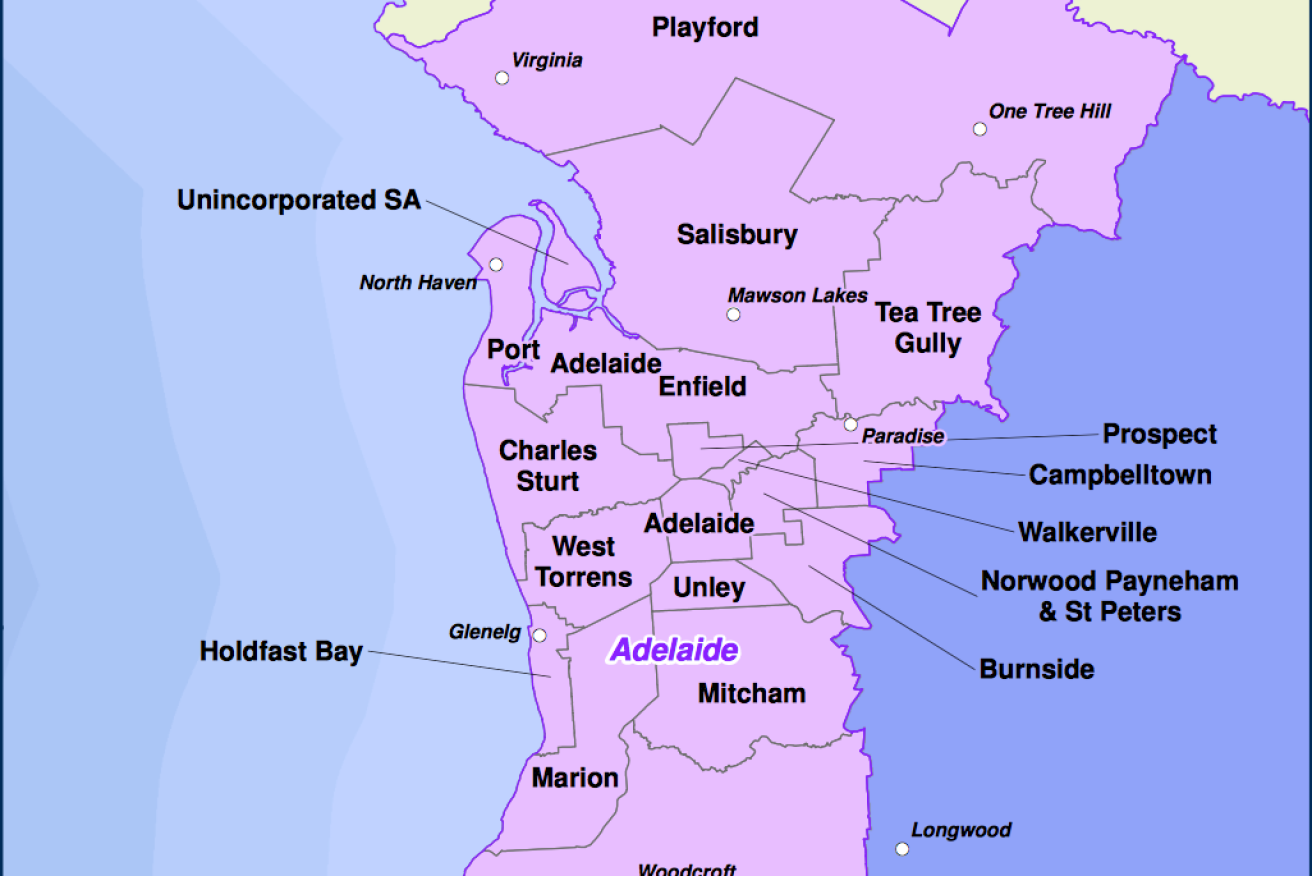Council amalgamation debate: LGA’s reform idea for “boundary adjustments”
The Local Government Association is pushing for legislative reform that will give a new independent umpire the power to change council boundaries, including overseeing amalgamations.


Adelaide's metropolitan councils. Map: Regional Development Australia
While firmly rejecting the concept of forced amalgamations, the LGA is developing a “boundary adjustment process” that would see straightforward changes to boundaries negotiated by neighbouring councils, and bigger, more complex, changes overseen by an independent body.
The proposals would cut the Local Government Minister out of the process, thus safeguarding councils from any political push for amalgamations.
However, it does show the LGA’s willingness to consider changes to council boundaries, and provides a pathway for potential council amalgamations on the recommendation of an independent commissioner or body.
LGA CEO Matt Pinnegar raised the concept with InDaily after the South Australian Centre for Economic Studies (SACES) released a report last week calling for the rationalisation of local councils in the interests of economic efficiency.
Pinnegar was scathing about the SACES report, but revealed the LGA was working on a plan to take the amalgamation debate out of the political realm, and establish an independent process through which councils could give up or take up territory, or even join forces with a neighbouring council or councils.
Pinnegar said that under the LGA’s concept “future decisions about council boundary changes and consolidation would be made by an independent body with appropriate skills, experience and knowledge”.
This body, appointed by the state and local government sectors, would make decisions on major changes based on guidelines which are being developed by the LGA.
Less complex boundary changes would be changed via a “separate process” to “remove unnecessary barriers to straightforward boundary reform”.
Some of the council boundaries in South Australia haven’t changed since cities were incorporated in the 19th century, leading to some anomalies. Some in local government also believe that the process of amalgamation 20 years ago led to some unusual boundaries that don’t reflect “communities of interest”.
The LGA is in talks with Local Government Minister Geoff Brock and, generally speaking, he supports reform in this area.
Both Brock and Pinnegar rejected the concept of “forced” amalgamations.
Pinnegar said the SACES report ignored evidence that amalgamations do not lead to significant economic benefits.
“The report couldn’t even get the number of councils in the state correct – and it confuses ratepayers with population,” he said.
“Also, the findings and recommendations do not take into account the work the LGA is conducting on boundary reform. Evidence from other bodies suggests that amalgamations will not lead to significant economic benefits.”
Pinnegar quoted work by the Financial Sustainability Review Board which found that the size and density of councils played little role in the sustainability or the long-term financial performance of councils.
“Proponents of council amalgamations often overlook or ignore the fact that councils are already achieving cost savings and efficiencies through regionalisation and shared services.”
He argues the reforms being developed by the LGA would increase the potential for councils to work together on service delivery.
“We are ahead of the game by proposing a boundary adjustment process through legislation that meets the needs of councils and communities.”
He said councils were already talking about boundary changes they see as potentially beneficial.
At the moment, the Minister is responsible for making decisions on boundary changes after the State Government scrapped the Boundaries Adjustment Facilitation Panel as part of its consolidation of government boards and committees.
The LGA’s suggested changes appear to be a response to fears that amalgamations would be forced upon councils by a Minister.
Councils are in the firing line of a collection of SA industry bodies, led by the Property Council, who believe local government is ripe for reform, including consolidation of the number of SA councils.
NSW Premier Mike Baird has recently revealed plans to scrap a series of metropolitan and regional councils, sparking some community protests.
Brock told InDaily the State Government did not support forced amalgamations “simply for the sake of reducing the number of councils”.
However, he indicated he supported changes to the process for reforming council boundaries.
“I have initiated discussions with the local government sector to develop legislative proposals on boundary reform,” he said.
“These reform proposals are being considered through the Premier’s State Local Government forum and while there is broad agreement about the principles and the general shape reform should take, final decisions on all of the new structures and processes are yet to be made.
“I anticipate introducing boundary reform legislation in the Spring session of parliament following consultation on a draft bill.”




